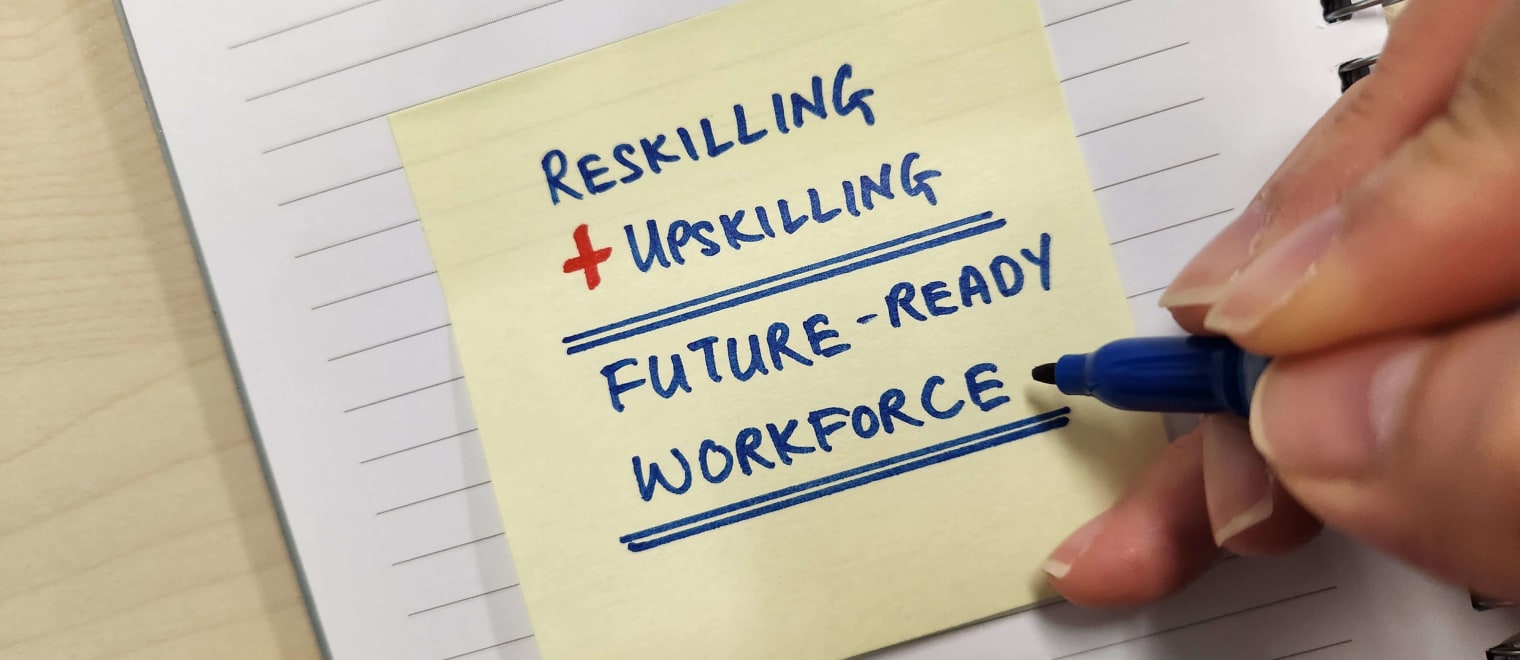This informal CPD article, ‘Upskilling and Reskilling Strategies for the Future of Work’, was provided by iAM Learning, who are transforming the way your workforce trains and retains, using high-end animation, lovable characters and captivating stories to make even the most serious subjects appealing and unforgettable.
Upskilling and Reskilling Strategies for the Future of Work
You’ve likely noticed that the workplace is evolving rapidly. That’s partly because of tech advancements like AI, the gig economy, automation, and the shifting economic landscape. And as it evolves, workers must do, too.
Upskilling (learning additional skills to supplement an existing role), and reskilling (learning a new set of skills to transition to a new role or career path) are no longer just optional – they are imperative to thrive at work. Leaders and business owners must encourage this behaviour to remain competitive, too.
Let’s look at some useful strategies to help teams prepare for the future of work.
Identify skills gaps: First and foremost, you need to see what areas need the most improvement and training. This step is essential for effective upskilling and reskilling efforts. Key methods include skills assessments to evaluate how proficient staff already are, performance reviews to identify what kind of training is required and employee surveys so gaps can be self-reported. Job task analysis helps to map role requirements against current skills and industry benchmarking to compare against sector standards.
Taking online courses: The rise of online learning platforms has made it easier than ever to upskill or reskill teams, wherever they are based. A huge number of skills from many different industries can be learnt, and learning can be scheduled around work, particularly if the content is bite-sized. Put the required skills into a learning plan, set realistic goals and actively apply the knowledge through projects and assignments. Obtain industry certifications through online courses to validate skills and knowledge.
Joining mentorship programs: Connecting with experienced mentors in the desired field can provide valuable guidance, industry insights and hands-on learning opportunities. Businesses can offer formal mentorship programs to employees, but individuals can seek out mentors through professional networks or events. To make the most of a mentorship, it’s critical to be proactive in seeking feedback, setting clear objectives and being open to constructive criticism.
Career pivoting: Reskilling may require a complete career change to align with the future of work. This might mean going back to formal education to earn degrees for high-demand positions and taking on entry-level roles in new industries. It could even mean leveraging transferable skills within a current profession. To successfully pivot, it’s key to research career paths and seek advice from professionals. Also, be prepared to start from the ground up, at least in terms of learning and experience.
As the workplace continues to transform, it's crunch time for upskilling and reskilling. Find out those skills gaps through assessments and reviews. Then level up with flexible online courses or by linking up with an experienced mentor. For some, a full career reboot might be the move - just be ready to start over on the learning curve. By taking steps like these, workers and businesses can evolve together.
We hope this article was helpful. For more information from iAM Learning, please visit their CPD Member Directory page. Alternatively, you can go to the CPD Industry Hubs for more articles, courses and events relevant to your Continuing Professional Development requirements.













